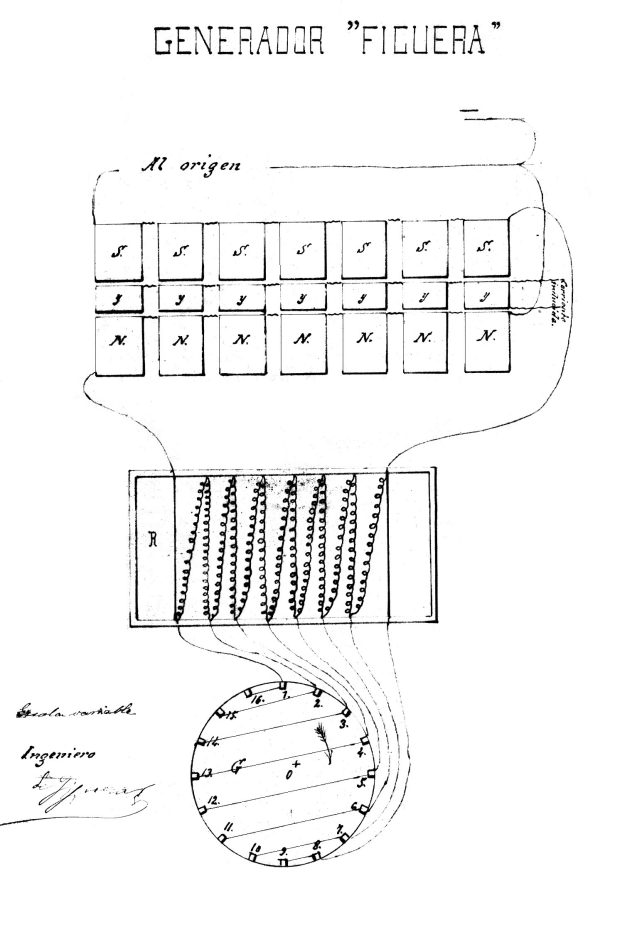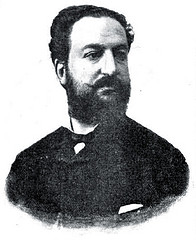I have open the file of Clemente Figuera once again, since new
information has surfaced from
Aaron Murakami relating to
Bob Teal's Magnipulsion:
Bob Teal was someone else that mastered the multifilar windings in parallel.
Ron Cole gives some answers to that in the docs Dave shared. Eric Dollard gave me
something else to chew on in regards to multifilar windings in parallel. I'm going to
test what Eric said when I can. Ever hear of a non-inductive inductor? Bell Labs had
this in some kind of relays in their analog networks. There is a way to design the
coil so that the current makes a magnetic field because of the ampere turns, but it
cannot develop any EMF. Therefore, amps x 0 volts = 0 watts to create a magnetic field.
That is obviously beyond what Ron Cole was doing or figured out but if it proves to
work, then applying it to something like the ZFM or any other motor means it would run
for free. The Bell Labs coils required multifilar windings that were paralleled.
In images 5 and 8 you can see the bifilar in parallel. Bob Teal's grandson
told me that he left a lot of details out of the patent
4,093,880 as well.

Magnetic field is from ampere turns and is not from voltage turns or any other
manifestation of pure radiant potential - there is no way around it. If you can charge
a coil without getting current to move, then you have a Trillion dollar invention. If
that was actually proven and I verified it, I'd invest every expendable dime I had
into it. The point is not kill the dipole, but for creating a magnetic field, current
with no voltage is the route for that and not the other way around.
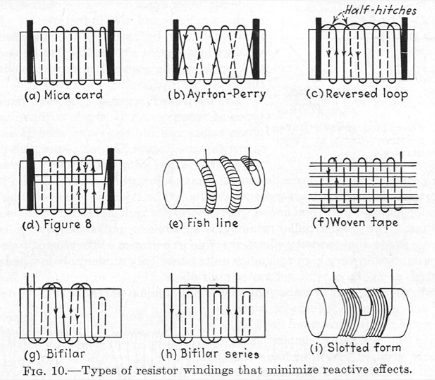
If it is true that you can make a electromagnetic coil that have
no inductance, but a magnetic field caused by ampere*turns. Then you can make coil
that has only a resistance caused by the diameter and length of the wire. One should
know that magnetic field is the product of the ampere*turns and it means that a coil
that uses 1 ampere and have 2 turns is as powerful as coil that uses 2 ampere and have
1 turn. Of course the inductance of the 2 turns coil is double of the 1 turn coil and
having it wound around a magnetic member, increase the magnetic field 50,000 times
compared to air. If it is possible to create an electromagnetic coil without
inductance, but with a magnetic field. Then it is possible to use the non-inductance,
magnetic field coils as the input coils in Clemente Figuera, et al. Infinite Energy
Machine or invert it so the output coils are at the ends with the input coil in the
middle. There is also a third alternative. The output coil is wind over the input
coil."- Hermes Atar Trismegistus
Hi Hermes,
Yes, if Aaron Murakami is correct in saying that you can wind a bifilar coil that
produces a magnetic field without having any inductance in the coil, then you could
use that to make any number of devices that would output energy without needing any
input power. Unfortunately, it doesn't work. If there's no inductance, there's no
magnetic field produced. If there's no inductance, too, that coil can't take energy
out of a change in magnetic field. Making a magnetic field requires you to put energy
in, and you can get that out again when it collapses.
Aaron Murakami is full of ****(profanity word, left out). That's about all that needs
saying. He hasn't got anything that produces Free Energy, and if he did he'd not be
telling the world about how to do it but would be making and selling the devices and
patenting the hell out of them. He's making his money from people who hope that he's
telling the truth. Those people are mistaken.
You can test Bob Teal's and Eric Dollard's ideas if you want. They don't work, either,
since if they did then they'd have had working systems many years ago and not be still
telling you it ought to work.
For these sorts of "magnetic principle" ideas, it will normally be easy to quickly
make something to test the principle itself. The large scale and expensive machines
they show still don't work, either. So: wind a coil on an air-cored former using
bifilar winding. Connect the two wires in opposition. Put a current through it and
measure the magnetic field produced. Measure the inductance using an inductance meter,
too. It's unlikely you'll measure zero inductance or absolutely zero magnetic field
here because you need to be very accurate with the winding to do that, but both
measurements will show that the magnetic field will be puny for the amps supplied and
that the efficiency is far lower than a normally-wound coil. I suspect Bell Labs used
them because it allows them to run on two different voltages by changing the wiring
between serial and parallel, and not because of any gain in energy that they expected.
For the
plastic film, look up exactly how it works. You'll find therefore that multiple
layers won't work any better. Then again, why throw that energy off the world when you
can use it to power something instead?
Best regards, Simon
Hi Hermes,
If you try the Wonju-Bajac idea out you'll also find it won't work.
Strangely, the energy is actually mostly stored in the air-gap and and so an air-gap
is needed for chopped input systems. You'll find it in the flyback transformer where
the magnetic field is charged up by the primary and then discharged by the secondary.
It's not however my special subject, and I haven't gone looking for the reason.
Magnetic core design is somewhat of an art and I haven't needed to learn it. Probably
to do with the relative permeabilities of air and ferrite.
I can however tell you that you won't get any extra energy out of this system, and it
will be lossy. This is because there's no reason for energy from outside to flow into
it. Energy will instead leak out because it is at a higher energy-level than the
environment around it. That is a really important principle that I'd like you to
understand. Energy flows from a higher level to a lower level, and to make it go the
other way you need to do work (which is in fact simply putting energy in).
No mistakes in what I called Aaron. The first sentence however referred to Figuera
since it was his work that Aaron referred to, so that wasn't a mistake either. If you
edit my emails before publishing them with my name attached, then I will simply stop
replying. This is very impolite of you. Either cut out the bits you don't like (and
indicate that it has been edited) or do not attribute it.
Best regards, Simon
I have open the file of Clemente Figuera once again, since I have been studing the new
Clemente Figuera┤s motionless generator
website in English and there is a new video that explain some of the theory behind it:
N-N in the Figuera device
As usually I have contacted
Simon Derricutt in France to have
his opinion, before doing anything else. - Hermes Atar Trismegistus
Hi Hermes,
I've had emails with Marathonman. He's of course certain that he's
going to prove that it all works, but it won't. Moving the boundary between the two
fields can be done with an almost-zero energy cost, but if you try to take power out
of a coil that is in that moving field then the current in the coil will produce a
field in opposition to the movement of the field, and thus stop it moving. Net result
is no gain in energy overall, but instead a small (or substantial) loss.
You can of course test this out yourself if you don't believe me. Doug is doing just
that, and will no doubt continue to try since he thinks his logic is right and he's
made an error somewhere in the construction. I don't doubt his honesty or that he
believes he's right, but I think he's missed the interaction of the current in the
pickup coil and the magnetic field that that will necessarily generate. That field
from the pickup coil is important, and is the reason why the Figuera device cannot
produce Free Energy.
There are practical applications of the field
configuration he's using, but Free Energy isn't one of them.
Best regards,
Simon
Hi Hermes and Mehmet,
It's worth looking closely at
Thane Heins' experiments, since
he figures he's getting overunity in a similar way. Actually, what's happening is that
his motor becomes less inefficient, and after all these years of big claims he still
hasn't managed to get anything to self-loop. Self-looping (or otherwise producing
energy without needing to burn fuel) is the only valid test of any Free Energy machine.
Don't trust meters.
Lenz's law is simply another example of
Conservation of Energy.
As far as I can see, there is no way around that, and all the experiments that people
have done over the years haven't shown anything that actually breaks that rule. If you
want to keep trying, that's fine and it is your right, but don't expect any of the old
stories about someone having done it to have any truth in them. If someone had
actually done this in the past, then although it's possible that they'd have been
ripped off by their business partners (or someone else) it would still have been
mass-produced by someone. Far too much profit in that for anyone to try to suppress,
since it would make far more money for them than whatever method they were currently
using to produce energy.
Use a bit of common sense here - if it's been
published a long time ago then a lot of people will have tested it before you saw it
on the net.
Here in France I've now got sputtering working well enough, so I've
got first production of METTEC (still some more work to do on them before I can test
them) and should be able to test out the initial IR-PV fabrications in a few weeks.
Neither of these break CoE (they work because energy is conserved) so it will be nice
to have tests of the theory.
Best regards, Simon.
Hi Kone, Hermes,
According to accepted theory magnetic fields always closes in
on themselves acting like rubber bands. The flux shooting out at the intersection
returns to the opposite poles of the magnets. This can be tested by a small pick-up
coil if the fields are alternating. If the fields are in only one direction a Hall
effect device can measure the fields. In normal magnetic circuits a magnetic conductor
like iron is used to close the path as air is a really bad conductor of magnetic
fields. Air gaps are kept as small as possible if not used for storing magnetic energy.
An air gap will hold most of the energy of the field as the iron core is a good
conductor and thus doesn't store much magnetic field energy in it. The magnetic flux
just passes through the core like an electric current in a good electric conductor.
Hermes,
Moving the field back and forth along the coil will actually
induce current in the coil as the coil sees the flux as changing direction. The field
of the coil when loaded is of opposite direction to the field that induces the current
(Lenz's law). But as there are two primary fields of opposite direction the opposing
field from the secondary coil will be in phase with one of the primary fields of the
opposing primary coils. This could cause coherence between the fields in phase and
thus liberate energy from the cosmic background (the aether) according to the
inversion principle given in W.B. Smith's book 'The New Science' chapter 10:
https://www.wanttoknow.info/energy/wilbur_smith_new_science
Regards
Ole
Hi Bob,
"What if the Arc/Spark is part of the actual process in getting more
energy?"
Of course this is a possibility. Chernetsky's self-generating
discharge plasma claims just that
(
http://rexresearch.com/chernetskii/chernetskii.htm). Also plasma tubes has some
regions with negative resistance characteristic and electron tubes can strip off the
electron emitting layer and use this as an energy source. But perhaps burning or
consuming the materials in other ways is just as efficient?!
Personally I like
the Inversion principle of W.B. Smith as he claims that this principle can take out
energy from the cosmic background of space. That background is electrons and positrons
according to Smith and those particles are what makes up the physical world we're part
of. The trick is to mix two fields of the same kind same size and same direction to
become coherent. This happens in electromagnetic coils and many other places. Take
two similar coils having the same current through them. Each one represents one
unit of energy or a total of two units of energy. Now put the same two coils on
only one of the cores and the inductance is quadrupled when the fields are reinforcing
each other. Put the same current as before through the 'new' coil and the stored
energy is four times that of a single coil on the same core. I.e. that's four units
of energy. The current hasn't changed. Only the space changed to share both coils.
Smith never built such a device before his death as far as I know. The principle of
inversion is explained in chapter ten of his book:
(
http://www.rexresearch.com/smith/newsci~1.htm#ch10forces)
Tariel Kapanadze may use that same principle in his electronic self-runners.
Dr. Andrey Melnichenko accidentally discovered that same principle when melting a
microwave waveguide by having three microwave transmitters send their waves through
that rectangular copper tube without having enough power to melt it. The waves became
coherent and thus actually did melt the tube.
Three similar waves becoming coherent is 9 times the power of a single wave.
Regards
Ole
I have open the file of Clemente Figuera once again, since I have been thinking and
come up with the solution to the Clemente Figuera, et al. Infinite Energy Machine.
The problem with the patents is that they show a transformer with two input coils and
one output coil. No matter how you wind the coils. The output coil always "see" the
input coils as in an ordinary transformer. So no matter how you wind the coils, the
transformer theory is a reality in the drawings of the Clemente Figuera, et al.
Infinite Energy Machine.
The solution is to prevent the turns of the output
coil to "see" the turns of the input coils. This is done by inserting very weak
permanent magnets between the input and output coils. The total input magnetism will
then be the force of the magnetic fields from the input coils+the force of the
magnetic fields from the very weak permanet magnets. As it is well known the force of
the induced magnetic fields are ampere*turns, which means that an electromagnet with
two turns and one ampere is as powerful as an electromagnet with one turn and two
ampere. Therefore you can use coils with with many turns as input coils and low
ampere, without the output see any difference from an electromagnet with few turns and
high ampere.
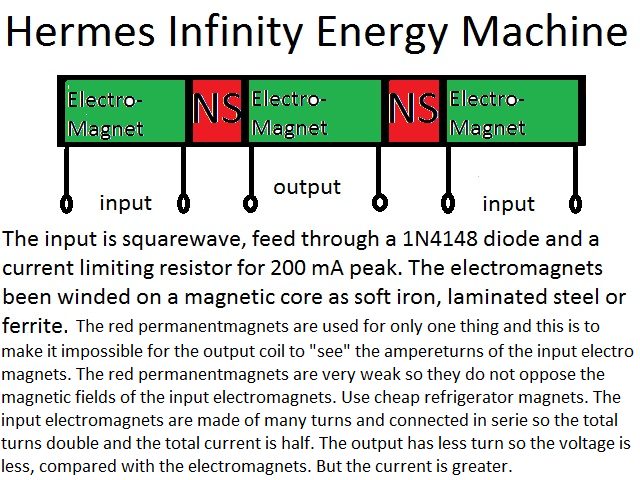
It might also be possible to use electromagnets feeded by direct
current instead of permanent magnets. The direct current can be feed by a variable
constant current source or a variable resistor while experimenting from a battery.
- Hermes Atar Trismegistus
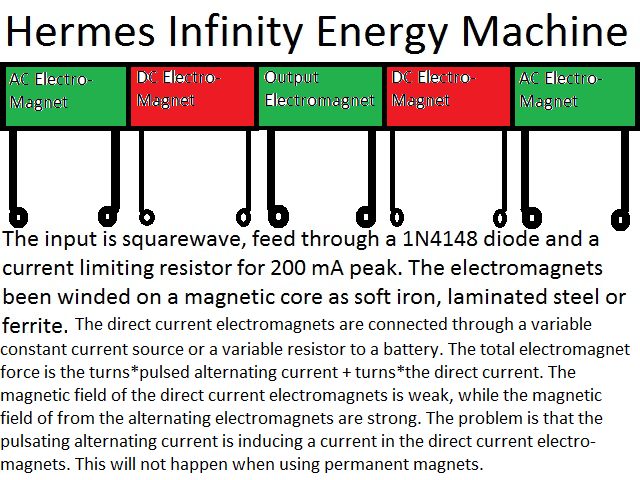
My e-mail to
Simon Derricutt in France regarding
my new version of the Clemente Figuera, et al Infinite Energy Machine:
Hi Simon,
We have exchanged views about my idea "Hermes Infinity Energy
Machine" before. See:
http://gratisenergi.se/research.htm
Lately, I have been thinking and come up with a similar idea.
See the
"New" sign at the bottom of the Clemente Figuera, et al. Infinite Energy Machine
http://gratisenergi.se/figuera.htm
Houston we have a problem
and I wonder how much a weak permanent magnet
can conduct magnetism if put in serie with a stronger electromagnet? Is there any
limit? It is well known that if you have 3 similar permanent magnets and put them in
serie. Then the resultant in magnetic force will be three times compared to only one
magnet.
Can a refrigerator magnet conduct a very large magnetic force from an
electromagnet or does one have to use a stronger permanent magnet?
Best Wishes,
Hermes
P.S Simon, have you begin your tests yet?
P.S any news Mehmet?
Hi Hermes,
Magnetic fields vector add. You can't thus block one AC
magnetic field with a constant field. Either magnets or electromagnets with DC won't
change the result unless you push the core into saturation. Either way you will get no
free energy.
Best regards, Simon
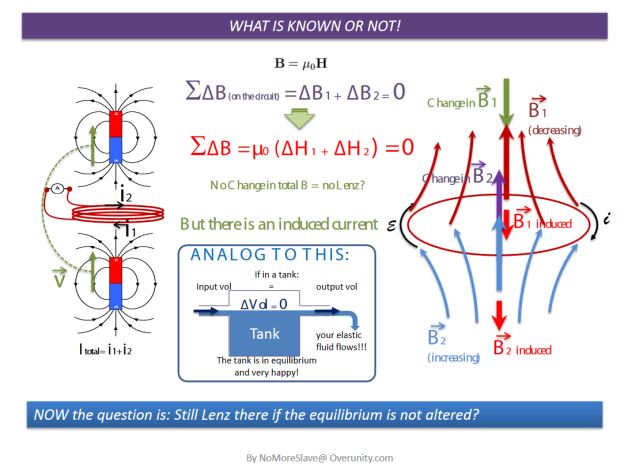
Hi Simon,
What is your opinion about two different moving
magnetic field, that together will have a constant magnetic field upon a receiver
coil? When the magnetic field on one side of the coil is increasing the magnetic field
on the other side of the coil is decreasing, and the opposite is true. Click on the
above photo to see the background of this idea.
Best Wishes, Hermes
Hi Hermes,
Firstly, the calculations on recycling the reaction-mass for a
reaction engine show that the energy cost of bringing that mass up to the working
velocity exactly equals the extra energy you get from using it, so that
CEACU spinning water-jet idea won't be
OU. Sorry I told you that it might - that was somewhat of a brain-fart because I'd
been looking at the reactionless thrusters (that will do this) and then saw that any
thrust would do the same thing, but didn't follow the full energy calculations before
jumping. However, you'd have found out yourself if you'd done the energy calculations
before building it, as I specified you should do.
For the Figueras idea, we've
discussed this before. It doesn't work. Electromagnetic systems store energy in
magnetic and electric fields, and what you put in is what you get out.
If you
really want to produce something that is OU, therefore, you need to do something
different than the historical attempts, since they didn't work. Look at the
Becker and Bhatt thruster idea because that can be made pretty simply, and you
will be able to make something that self-runs and has power over to run something
else.
Best regards, Simon
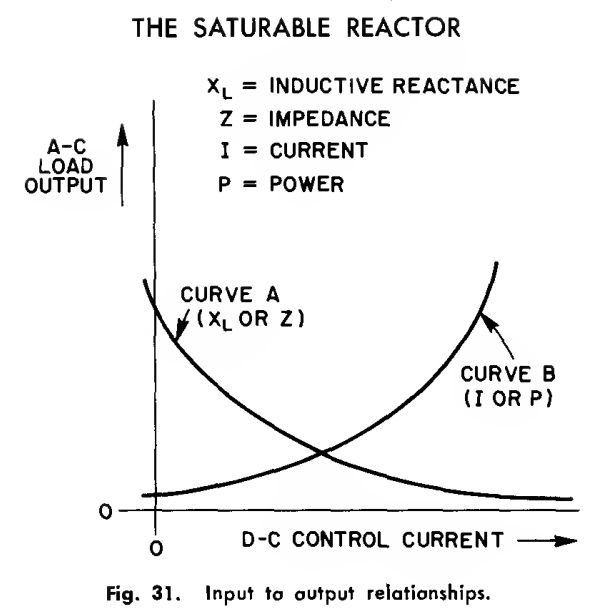
Homemade Magnetic Amplifiers
Hi Simon,
Could you explain the photo above of the
Saturable Reactor? Is the Direct
Current linear? and the Alternating Current/Output Power raising exponential? while
the impedance of the inductor lowers exponential? I am asking these question, because
I found out why Clemente
Figuera used air gaps between the
primaries and the secondary. They store more energy before the primaries goes into
saturation:
"Air gaps are an integral part of gapped inductors. The gap reduces effective
permeability of a given magnetic circuit and allows storing much greater energy before
saturation is reached. Increasing the gap reduces the inductance, so the winding must
have more turns to compensate accordingly."
Best Wishes, Hermes
Hi Hermes,
Using a gapped inductor reduces the inductance and also
allows more energy to be stored in the external field. Once you're getting close to
saturation in a core then the rise in magnetic field for a rise in current reduces,
and when you reach saturation then the increase in magnetic flux for a rise in current
gets very close to what would happen with an air-cored coil. Note we're here talking
about differentials rather than absolutes.
However, you don't get any extra
energy out than you put in. Possibly you'll get some odd measurements from the meters,
depending on how they are set up (do they assume it's a sine-wave and thus tell you a
lie about the actual effective voltage and power?) but you won't be able to get
something self-looping no matter what the meters tell you is possible. Basically it's
a dead-end here if you want Free Energy.
As I've said before, if you want Free
Energy you need to look at
Becker+Bhatt. Since that violates CoM, it becomes possible also to violate CoE.
For why it's possible to violate CoM, you can check on my earlier writings on this and
also spend a while understanding Mike McCulloch's theory. Though it's nice to have an
explanation, the important thing to look at is the experimental evidence - the
thrusters actually work.
Best regards, Simon
Hi Simon,
The energy stored in an inductor is:
E=ŻLI^2.
What if I told you, that if you use
a cross between a serial and a parallel resonance circuit you can get twice the
output current from any current amplifier? Can this discovery be used in a Clemente
Figuera device?
Best Wishes, Hermes
Hi Hermes,
The
current in the inductor represents stored energy. With a high-enough Q in the system,
you can basically get any current you want in an inductor in a resonant circuit.
The energy you can get out of it still won't exceed the energy you're putting
in. With a larger storage (as here) it will take longer to dissipate that energy
store, but if you take energy out of the magnetic field by doing work (using a coupled
coil and drawing current, for example) then the energy store will be depleted. It's
only being filled at the same rate, as fast as the amplifier puts energy in.
Thus it won't do what you hope with the Clemente Figuera design.
The thing is
with electromagnetic systems that they are coupled and the energy is stored in
magnetic fields or volts on a capacitor. Take some current out anywhere in the system
and the total energy store goes down (because it's all coupled), and it's only
replenished by the energy you put in. Thus you don't get any more energy out than you
put in. Put in a bigger energy store, and it takes longer to get to zero, but also
takes longer to fill up again.
It's about equivalent to thinking that adding
more flywheels will produce extra energy. Yep, you can get more power that way, but
with real devices you always lose some energy to heat.
As I said earlier, if
you really want Free Energy, you should be looking at those electric thrusters. They
produce thrust without using reaction-mass being ejected, and thus allow you to
violate both CoM and CoE. The theory may be difficult, but in practice it's just a
leaky capacitor and a power supply, so it's pretty easy.
Best regards, Simon
Hi Simon,
I found this interesting article about
Clemente Figuera on
The General Science Journal.
Are you familiar with
electrostatic generators? The author
Julio Gobbi claims that the Figuera Machine works by
electrostatic induction instead of
electromagnetic induction. Can it really work as described?
Best Wishes, Hermes
Hi Hermes,
There is ion energy in the air, and it can be harvested using an electret cable. The
power that it can deliver does however depend on how strong the wind is.
I
skimmed through the .pdf on Figuera, but didn't see anything that would suggest they
might be right on the principle of operation. In order to see whether it works, really
you'd need to build it and find out. Personally, I doubt that it will work at all,
since in most places that extra energy in the air is pretty limited and I'm not
convinced that this system will harvest it anyway.
With other ways of producing
energy being a lot easier to build, and ways of breaking the relevant symmetries
having been published, maybe more productive to look at those instead.
Best regards, Simon
Hi Simon,
is the
Egg of Columbus a way to break the
symmetries of the Clemente Figuera, et
al. Infinite Energy Machine? Can you use two diodes and a variable resistor to
delay the current through coil C?
Best Wishes, Hermes
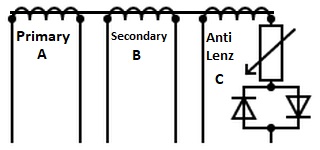
Hi Hermes,
That "egg of Columbus" looks to me to be simply
changing the phase of voltage versus current of the transformer by adding in a third
coil. It won't break Lenz's law, though if you measure the RMS voltage and current
delivered and don't look at the phase relationships you might get an increased VAR
out. Thus a simple (in fact too simple) measurement of power out and multiplying the
RMS volts by the RMS amps will imply that you're getting more power out. Feed that
power to a resistor and heat some water with it and you'd instead see that no extra
power is there.
If you're using a toroid ferrite core, and you're running at a
high-enough frequency to exceed the effective speed of light in that core, then there
may be a chance of something strange happening, because then the light-speed delay
breaks the normal symmetry of action being equal and opposite to reaction (Newton's
third law of motion). Means you'll need to both know the speed of light in the ferrite
and get the phasing right, but it looks like there might be a possibility there. Not
something I'd personally spend a lot of time on, though.
Consider it this way:
with Lenz's law you're using a coil to store energy in the magnetic field of the core.
Any other powered coil that interacts with that magnetic field can put energy in or
take it out, and a third (or more) unpowered coil in range of that field can take
energy out of that field. The whole thing is inherently symmetrical, since there is
only one energy store (that magnetic field) for the system, and each coil can either
add or take away from that energy store.
The only way you can really break that
symmetry is if you can control the transmission of that magnetic field by using less
energy than you can extract from the change of the field. You obviously can't do that
using a coil, so you need another way. Might be possible using the property of
high-permeability ferrites that a mechanical stress reduces that permeability, but
last time I looked at that it didn't work. However, there's also the possibility of
using a superconductor and the Meissner effect, and a friend is working on that.
Best regards, Simon
Simon is right. "the egg of columbus"
doesn't work, because I have tested the idea.
Best Wishes, Hermes
 Hi Simon,
Hi Simon,
What is your reaction to this way of powering Clemente Figuera coils?
like polarity induction positive bias
Best Wishes, Hermes
 Hi Hermes,
Hi Hermes,
Short of time here since I'm preparing for the funeral of my
father-in-law.
The Figueres system is by its nature symmetrical. Basically
there's no way it will produce any extra energy, no matter how you drive it. Not worth
the time to try to get it working, or thinking about ways to improve it. It's the
wrong path to take.
Same applies to almost anything you can build using coils,
permanent magnets, and using a fairly low frequency (less than a GHz) to drive it.
There's a possibility using ferrites and spin-waves that transforms heat energy into
electrical energy, but this is pretty limited as to available power because of the
rate of ambient heat energy into the core.
What you need to do is to find an
equilibrium where you can add a "diode function" that makes it easier to go in one
direction than another, and thus breaks the normal symmetries. If you have a wave,
and a diode that will rectify it, you have power. Otherwise, not. Whatever, you need
to look at precisely what symmetry you are breaking, and consider what the result is.
Best regards, Simon
 Escumo wrote:
Escumo wrote:
I found this informative video about the electromotive force in an inductor and as you
can clearly see there are two times, in the video they are called the same back EMF,
but in Spain each time is called in a different way (perhaps the misunderstandings
come from this detail) the first time is called Counter Electromotive Force it is a
charge for the source and the second is called Extra Electromotive Force it is an
instantaneous current generator.
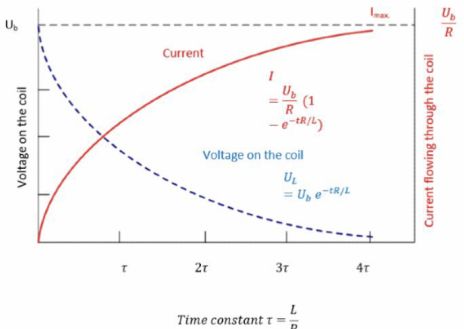
In the video behind they show us the two directions of the
electromotive force by self-induction that the coil is capable of making, now, those
two times of self-induction are different (coil can be charging or expansion of the
magnetic field it creates or discharging in contraction of its magnetic field) the two
times are antagonistic and instantaneous, in addition, the magnetic field is magnified
by the core of the coil. then the main question is, is it possible to control the time
that each of the self-induction times of a coil lasts? and if two coils are acting?
<< The self-induction of both coils can be synchronized and work in unison >> This is
what Figuera did in reference to the form of excitation to both coils and the other is
the induction mode that I already mentioned above.
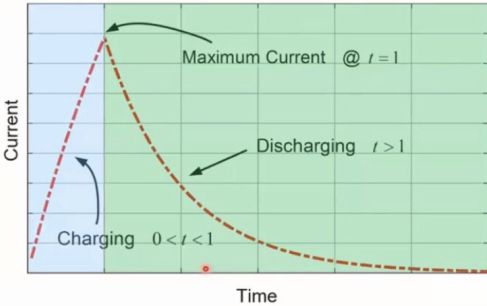
As we can see in the graphs, the charging and discharging time is different.
This is important because it determines the amount of energy involved and during the
discharge there is more surface area, meaning more energy. The question is, how to
control the times of each coil? This is done by the main commutator or distributor and
the way to direct the self-induction of each coil is done by another smaller
commutator on the motor shaft.
 Hi Simon,
Hi Simon,
The new text appears with the clickable link at the end of the page (Escumo wrote:)
http://gratisenergi.se/figuera.htm
P.S can the discovery about
How Electromotive Force Works be used on the figuera device?
Best Wishes, Hermes
 Hi Hermes,
Hi Hermes,
As before, in order to violate a conservation law you have to first figure how to
break the symmetry that results in that conservation law. With electromagnetics, the
only asymmetry I can see is the delay from the limited speed of light, so that where
there is a distance between cause and effect, there is also a time-delay there, and of
course there is always some distance between objects or events. However, the speed of
light is so great that the time-delay is very short and at the frequencies you're
talking about here those frequencies are way too low to see any asymmetry. If you do
do something that exploits that delay, any odd effect will be way too small to
actually measure.
Otherwise, with these coils you're putting energy into the EM
field, and then taking it out again from another location. Note it takes energy to
change the field from its rest (ground) situation, and you get that energy back again
when the system is allowed to get back to that ground situation.
Bottom line
here is that Figuera lied. Was there any report that it worked when he wasn't there?
That's a pretty good indication that he did something he didn't tell people about and
didn't show, and that there's some hidden stuff here. I've talked to people who think
they know how to make this actually work, and over 5 years on from "I'll prove you're
wrong and I can make it work next month" it's still not working. I don't expect to be
proved wrong on that, ever. It just won't work.
Yep, may be other ways to get
real OU, and I've talked about those before. Some pretty obvious routes to creating
energy using those "reactionless" space-drives. Maybe other ways using quantum physics
and the energy-difference that just happens when you change fermions to bosons. Energy
is a property of something, not a separate thing that can be transferred between
things and has an identity and reality of its own.
Look for the way to break
the symmetry.
Best regards, Simon
 How Electromotive Force Works
How Electromotive Force Works
 Clemente Figuera Generator 1908, Revived, Revealed
Clemente Figuera Generator 1908, Revived, Revealed
back to linkpage
suggestion
read and sign my guestbook
